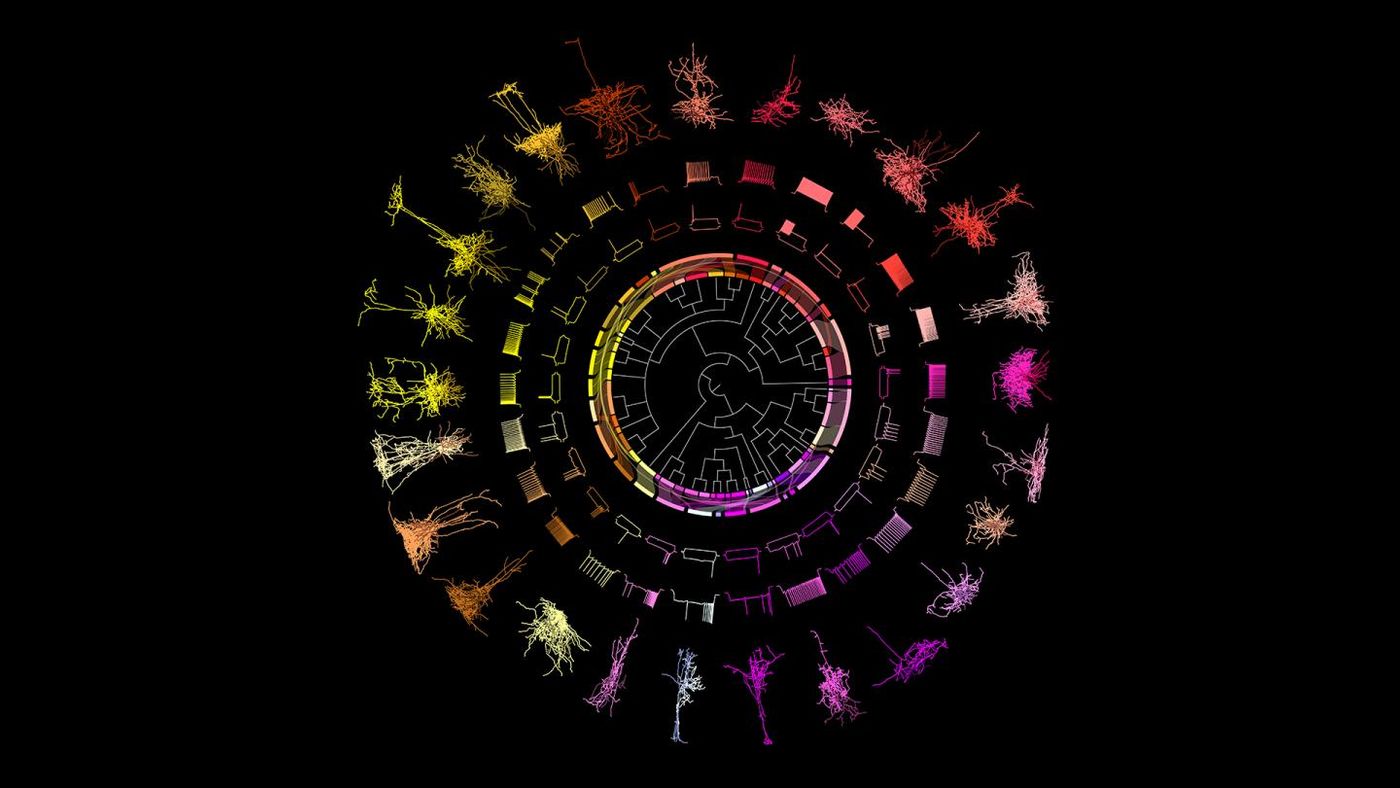Towards a Better Characterization of Neurons
The human body is made up of a wide array of different types of cells, and if we want to understand human diseases and treat them effectively, we have to know how different cells work in humans and our animal research models. Scientists have been working on that massive undertaking, and investigators at the Allen Institute have now characterized various types of neurons in the mouse brain. The work, reported in Cell, describes what genes individual neurons are expressing, how many other cells they connect with, what kinds of electrical signals they send, and their structure.
The findings are part of an effort to create a kind of 'periodic table' of cells in the mammalian brain. The researchers want to integrate various types of data so that it's easier to study relationships between different cells and their features. As we learn more about how the many kinds of cells in the brain are supposed to function, we'll also understand more about what goes wrong in disease.
"It's becoming increasingly clear that in some disorders, there's a deficiency in a very particular type of neuron in a particular part of the brain," said the study leader Gabe Murphy, Ph.D., Associate Director of Electrophysiology at the Allen Institute for Brain Science. "The more we understand the different types of neurons that exist and what makes them unique, the more we can understand what goes wrong if you have vulnerabilities in one or more of those types in disease."
In this study, the investigators focused on neurons that send signals that dampen the activity of other neurons, called inhibitory neurons in the visual cortex of the mouse brain (specifically, mouse visual cortical GABAergic interneurons). They identified 28 different kinds of visual inhibitory neurons in this study, which revealed a previously unknown level of diversity.
This work utilized a tool called Patch-seq, which captures data about a cell's three-dimensional shape, electrophysiology, and gene expression pattern. It was applied to 517 neurons, with additional data on gene expression and electrical features from 4,200 neurons. Gamers using the free neuroscience game Mozak, by the Allen Institute and the University of Washington Center for Game Science, helped create this massive dataset.
"With this approach, we're now learning something new about the brain by adding transcriptomics to the method of studying neuron morphology that's been around for more than 100 years," Sorensen said. "Using transcriptomics to label cell types has been revolutionary. When we sort cells in this way, we're able to reveal patterns we hadn't noticed before."
"This study has essentially provided a 'lookup table' for other neuroscientists, such that if you have information about only one property of a neuron, you can infer the other properties," said Edward Callaway, Ph.D., a Professor at the Salk Institute for Biological Studies who was not part of the study. "We need this kind of linking study to figure out what are the true cell types of the brain so we can begin to characterize them. This dataset enables that linking, and it will no doubt prove a great resource for future discovery."
This research will also be applied to a project that is mapping the electrical wiring of one cubic millimeter of the mouse brain in fine detail.
Sources: AAAS/Eurekalert! via Allen Cell Institute, Cell









